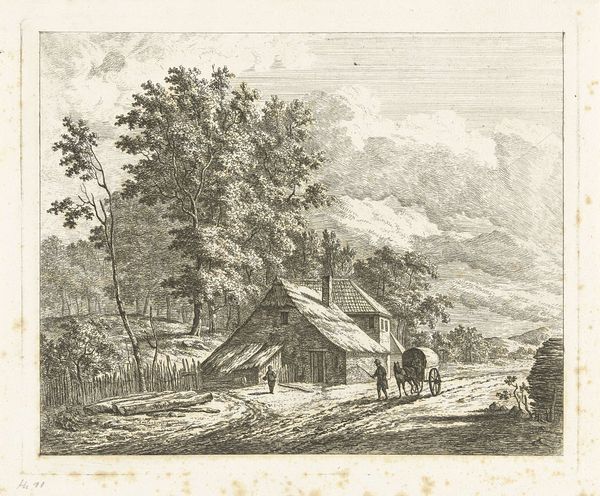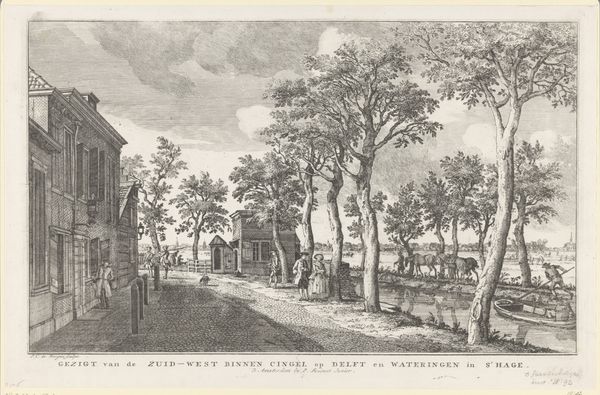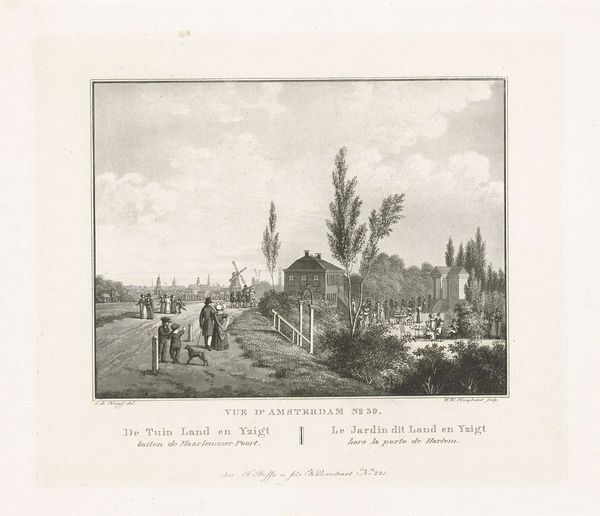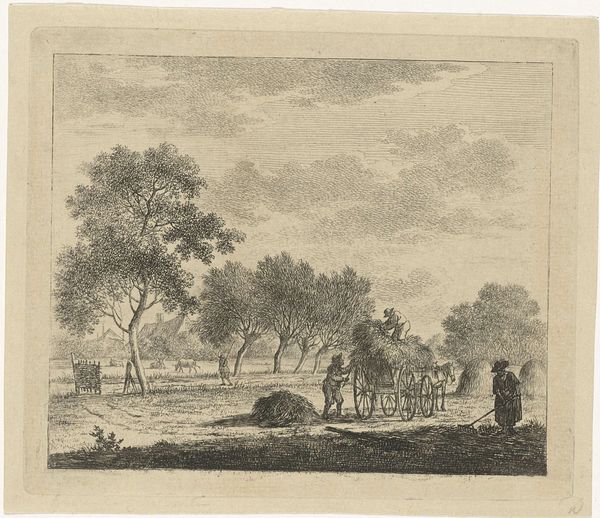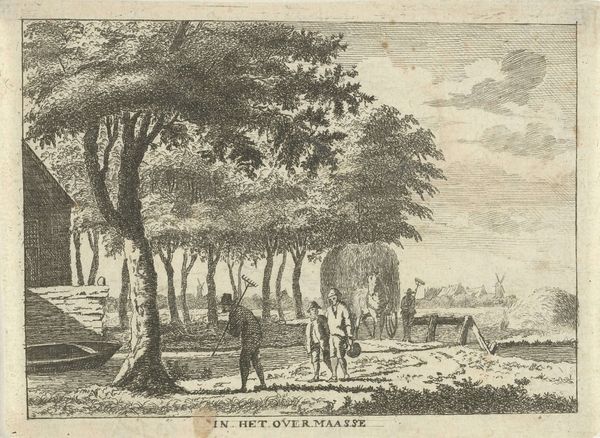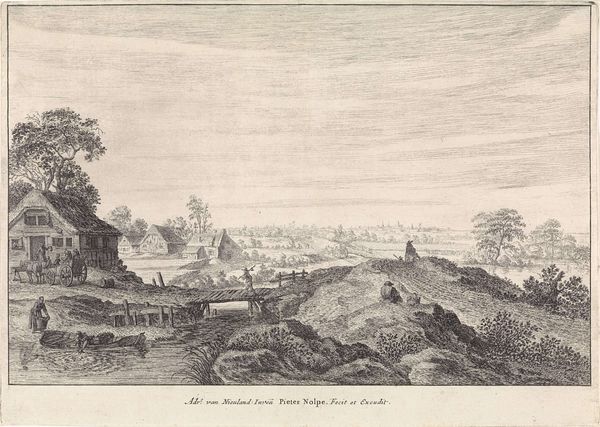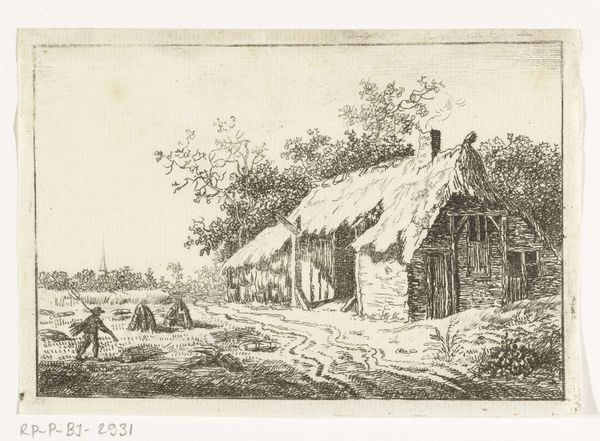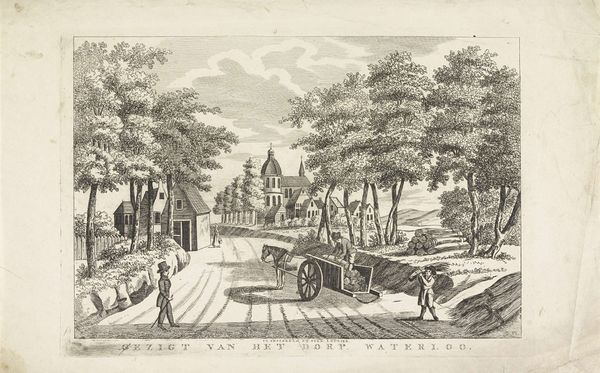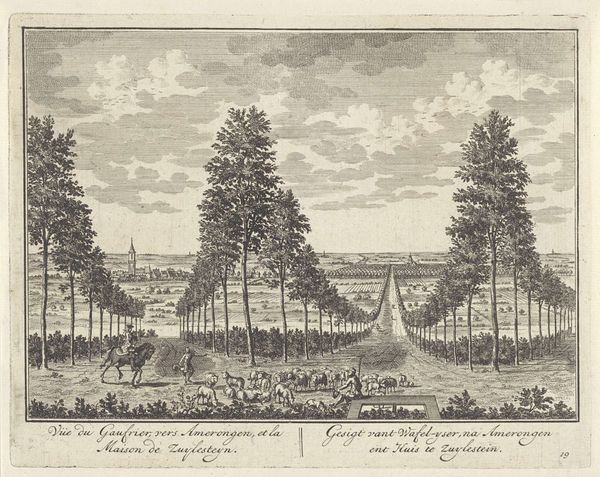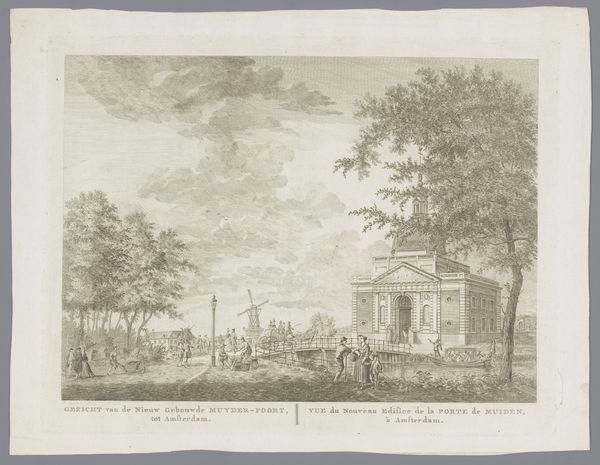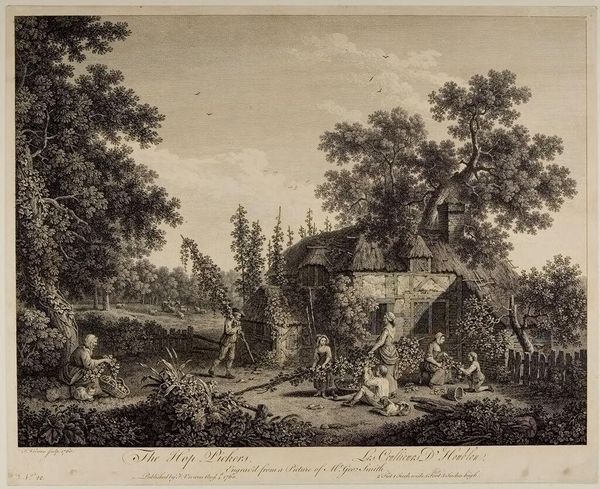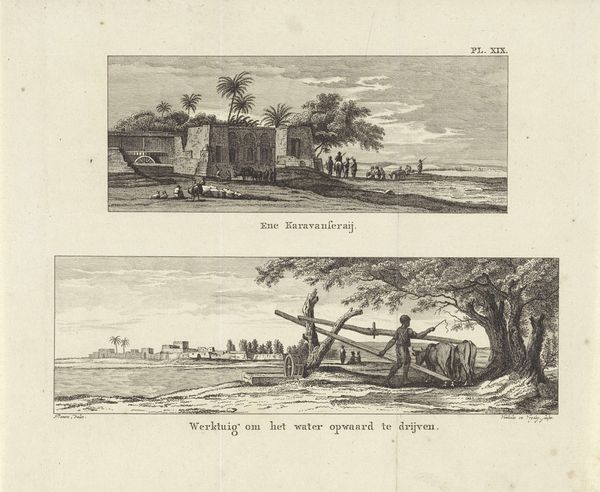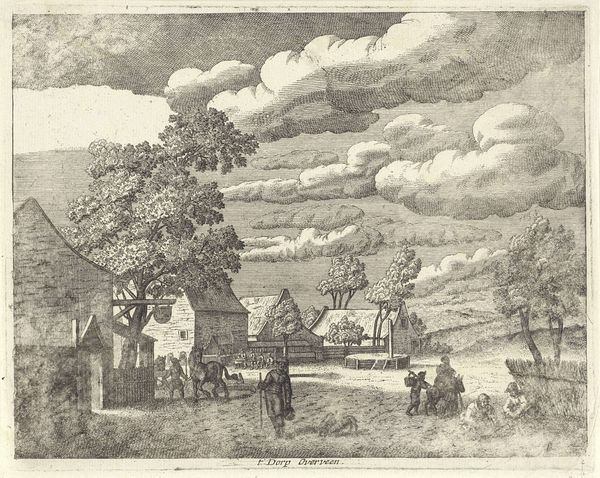
print, engraving
# print
#
old engraving style
#
landscape
#
genre-painting
#
history-painting
#
engraving
Dimensions: height 220 mm, width 318 mm
Copyright: Rijks Museum: Open Domain
Curator: Looking at this engraving titled "Inwoners van de Lituya-baai", it strikes me as a surprisingly candid depiction of indigenous life. It's dated to between 1786 and 1837. Editor: Yes, there’s an unvarnished quality to it. It feels quite grounded, almost like a document. I am thinking about the work that would go into the copper plate itself, the physical act of carving, to create multiples like this one. Curator: Absolutely. It depicts what's translated as "a dwelling place of the inhabitants of Port des Francais, in the fishing season.” You can see a clear depiction of their material conditions: the shelters, the drying racks for fish, the very particular form of that overturned boat. These visual elements provide insights into the lived experiences. Editor: It speaks to the division of labor, the daily rhythms of survival, and even leisure, with some figures resting or gathered together. You see these small dwellings that suggest temporary or seasonal use. How did images like this function in a colonial context? Curator: I think it's crucial to remember that the Dutch desire to portray indigenous peoples was tied to resource control. An image such as this serves as evidence and perhaps reinforces power dynamics that existed through Dutch commerce. Editor: That’s a key point. What was the relationship between these engravings and the consumption habits of Europeans at the time? Were these images intended as anthropological records or as promotional material enticing further resource exploitation and expanding colonial influence? Curator: Both, likely. Images, and artworks like this become both evidence and tool. Considering the scale of this engraving, it could've been circulated fairly widely as prints, which would amplify that intent and those outcomes, further normalizing that consumption back in Europe. Editor: Indeed. And that makes this humble print, made by hand in its time, still potent today. By closely examining how it was produced, distributed, and received, we gain insight into its larger impact and our place within a larger and more troubling narrative of power and representation. Curator: Agreed, it offers an invaluable insight into that complex history and ongoing dialogue.
Comments
No comments
Be the first to comment and join the conversation on the ultimate creative platform.
